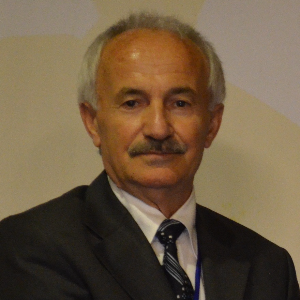Title : Thermal and mechanical processes and reactions in reversible behavior of shape
Abstract:
A series of alloy systems called shape memory alloys to exhibit a peculiar property, called shape memory effect in the β-phase fields with chemical compositions. This phenomenon is result of thermal and mechanical treatments and reactions. These alloys have thermoelasticity and superelasticity, governed by thermal and mechanical reactions, thermal and stress-induced martensitic transformations, and performed thermally and mechanically. Thermal induced martensitic transformation occurs on cooling with cooperative movements of atoms by means of lattice invariant shears in <110 > -type directions on the {110} - type planes of austenite matrix, along with lattice twinning, and ordered parent phase structures turn into the twinned martensite structures. The twinned structures turn into the detwinned martensitic structures by means of stress-induced martensitic transformation, by stressing material in the martensitic condition. Strain energy is stored in the material with deformation and released upon heating, by recovering the original shape in bulk level, and cycles between original and deformed shapes on heating and cooling, respectively. Superelasticity is also a result of stress-induced martensitic transformation and is performed in only a mechanical manner in the parent austenite phase region. The materials are deformed just over austenite finish temperature, and shape recovery is performed simultaneously upon releasing the applied stress. The ordered parent phase structures turn into detwinned structures by means of stress-induced martensitic transformation, like the deformation step in shape memory. Superelasticity is performed in non-linear way, unlike normal elastic materials, loading and unloading paths in the stress-strain diagram are different, and hysteresis loop reveals energy dissipation. The shape memory effect is performed thermally in a temperature interval depending on the forward and reverse transformation, on cooling and heating, respectively, and this behavior is called thermoelasticity. Copper-based alloys exhibit this property in the metastable β-phase region, which has bcc-based structures. Lattice invariant shears are not uniform in copper-based shape memory alloys, and the ordered parent phase structures martensitic alloy undergo the non-conventional complex layered structures on further cooling. The long-period layered structures can be described by different unit cells as 3R, 9R or 18R depending on the stacking sequences on the close-packed planes of the ordered lattice. In the present contribution, x-ray diffraction and transmission electron microscopy studies were carried out on copper-based CuZnAl and CuAlMn alloys. X-ray diffraction profiles and electron diffraction patterns reveal that both alloys exhibit super lattice reflections inherited from parent phase due to the displacive character of martensitic transformation. X-ray diffractograms taken in a long-time-interval show that diffraction angles and intensities of diffraction peaks change with the aging time at room temperature. This result refers to a new transformation in a diffusive manner.
Keywords: Shape memory effect, martensitic transformation, thermoelasticity, superelasticity, lattice twinning and detwinning
Audience Take Away:
The shape memory effect is a multi-disciplinary phenomenon and shape memory alloys are used in many fields from biomedical to the building industry. Therefore, I will introduce the basic terms and definitions about thermoelasticity and superelasticity and introduce the reached experimental results


